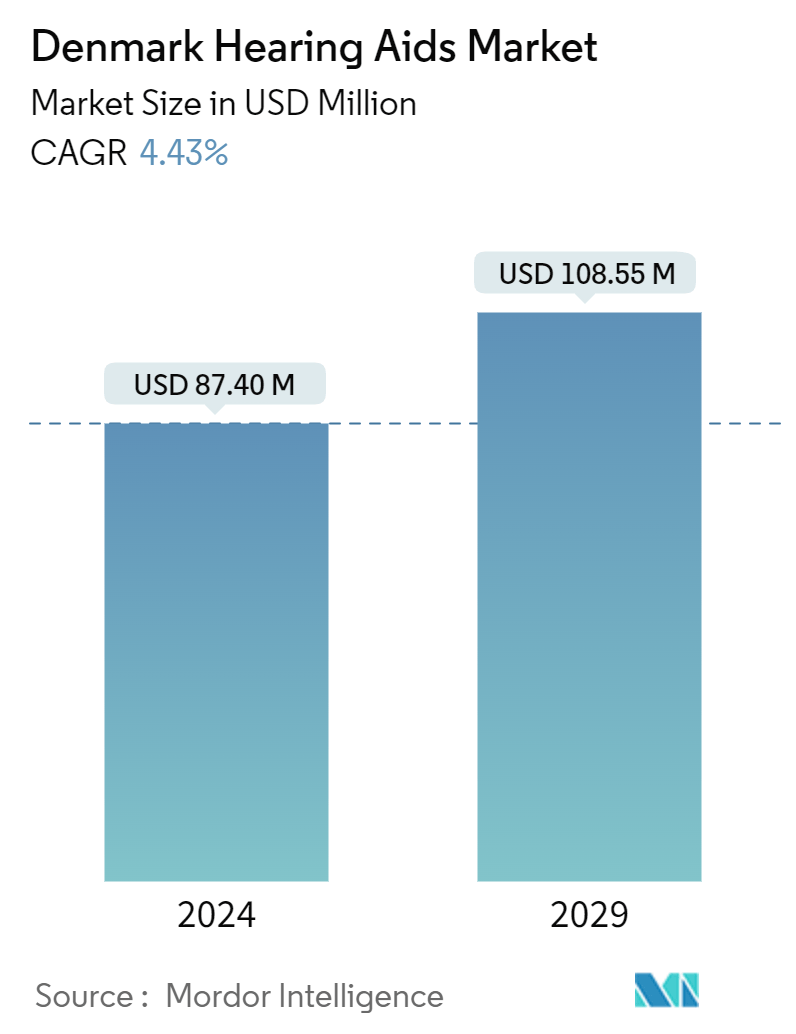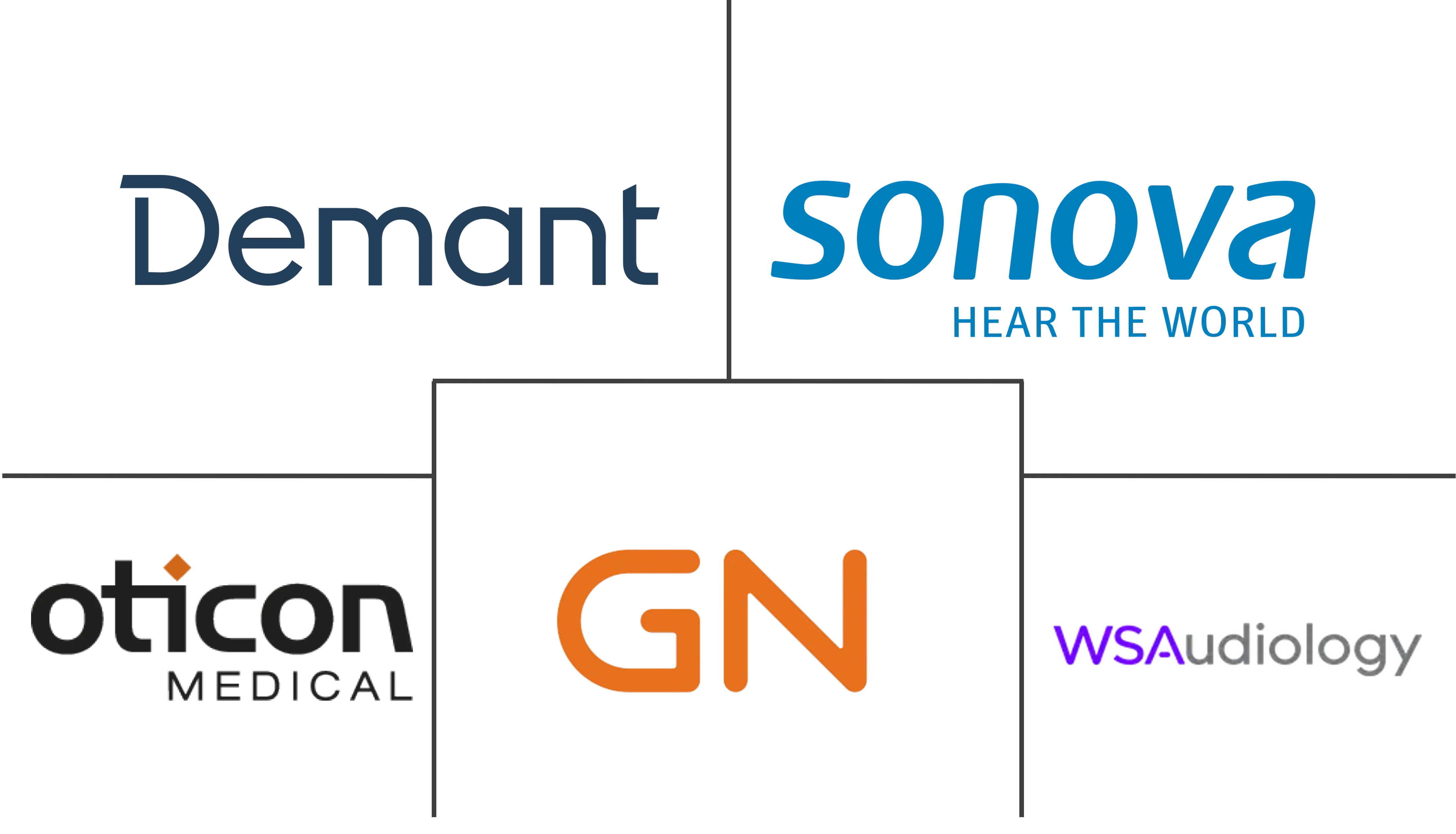Market Size of Denmark Hearing Aids Industry

| Study Period | 2019 - 2029 |
| Base Year For Estimation | 2023 |
| Market Size (2024) | USD 87.40 Million |
| Market Size (2029) | USD 108.55 Million |
| CAGR (2024 - 2029) | 4.43 % |
| Market Concentration | Medium |
Major Players
*Disclaimer: Major Players sorted in no particular order |
Denmark Hearing Aids Market Analysis
The Denmark Hearing Aids Market size is estimated at USD 87.40 million in 2024, and is expected to reach USD 108.55 million by 2029, at a CAGR of 4.43% during the forecast period (2024-2029).
Factors such as the rising burden of hearing loss, coupled with the growing geriatric population, technological advancements, and increasing awareness about hearing aid devices, are expected to boost the growth of the Danish hearing aids market over the forecast period.
The rising incidence of hearing loss in the population, owing to the increasing aging population, growing urbanization, and lifestyle changes leading to higher exposure to environmental noise, contributes to the high demand for hearing aids in the Danish market. For instance, a July 2024 article published in Calcified Tissue International highlighted that individuals in Denmark with osteogenesis imperfecta (OI) face a heightened risk of hearing loss (HL). The study noted that HL, often linked to middle ear bone changes in OI, manifests earlier in these individuals, with prevalence escalating with age.
In addition to the above context, it was reported that the younger population has some form of hearing loss, and the incidence of hearing loss has increased among the population aged 75 years and above in Denmark. The high prevalence of hearing loss is expected to drive the demand for technologically advanced hearing aids in the market; this, in turn, is anticipated to bolster market growth over the forecast period.
Moreover, researchers have established a significant link between untreated hearing loss and a heightened risk of cognitive decline, notably dementia. For instance, a January 2024 study by the University of Southern Denmark's Department of Clinical Research revealed that individuals with hearing loss face up to a 13% elevated risk of developing dementia, especially pronounced in those with severe hearing impairment. The research also highlighted that using hearing aids could potentially prevent or postpone the onset of dementia. This finding has led caregivers and healthcare professionals to advocate for hearing aids as a preventive strategy, likely driving market growth during the forecast period.
Furthermore, the introduction of innovative hearing aids by key companies is set to boost their appeal among the target population, further fueling market expansion. For instance, in February 2024, Oticon, Denmark, unveiled the Oticon Intent, the pioneering hearing aid equipped with 4D sensor technology. This innovation discerns each user's listening intentions, catering to individual needs while ensuring a comprehensive auditory experience. Also, this 4D Sensor technology enhances speech comprehension by 15% and aids users in prioritizing sound sources. Such advancements are poised to positively influence market growth in the coming years.
Similarly, in February 2023, Oticon, Denmark, introduced Oticon Real, marking a significant step in their BrainHearing initiative. This device offers users a balanced and detailed auditory experience, adeptly managing both soft and sudden loud sounds and featuring innovative wind and handling noise prevention. Given these technological strides, the heightened adoption of such devices among users is anticipated to increase and significantly drive market growth.
Therefore, with the rising burden of hearing loss, the increasing aging population, the use of digital hearing loss assessment devices for accurate detection of hearing loss, and the increasing adoption of hearing aids among patients suffering from dementia, the demand for hearing aids is expected to increase across Denmark, thereby bolstering the Danish hearing aids market’s growth. However, the high cost of hearing aid devices and the presence of alternative products are likely to impede market growth over the forecast period.

